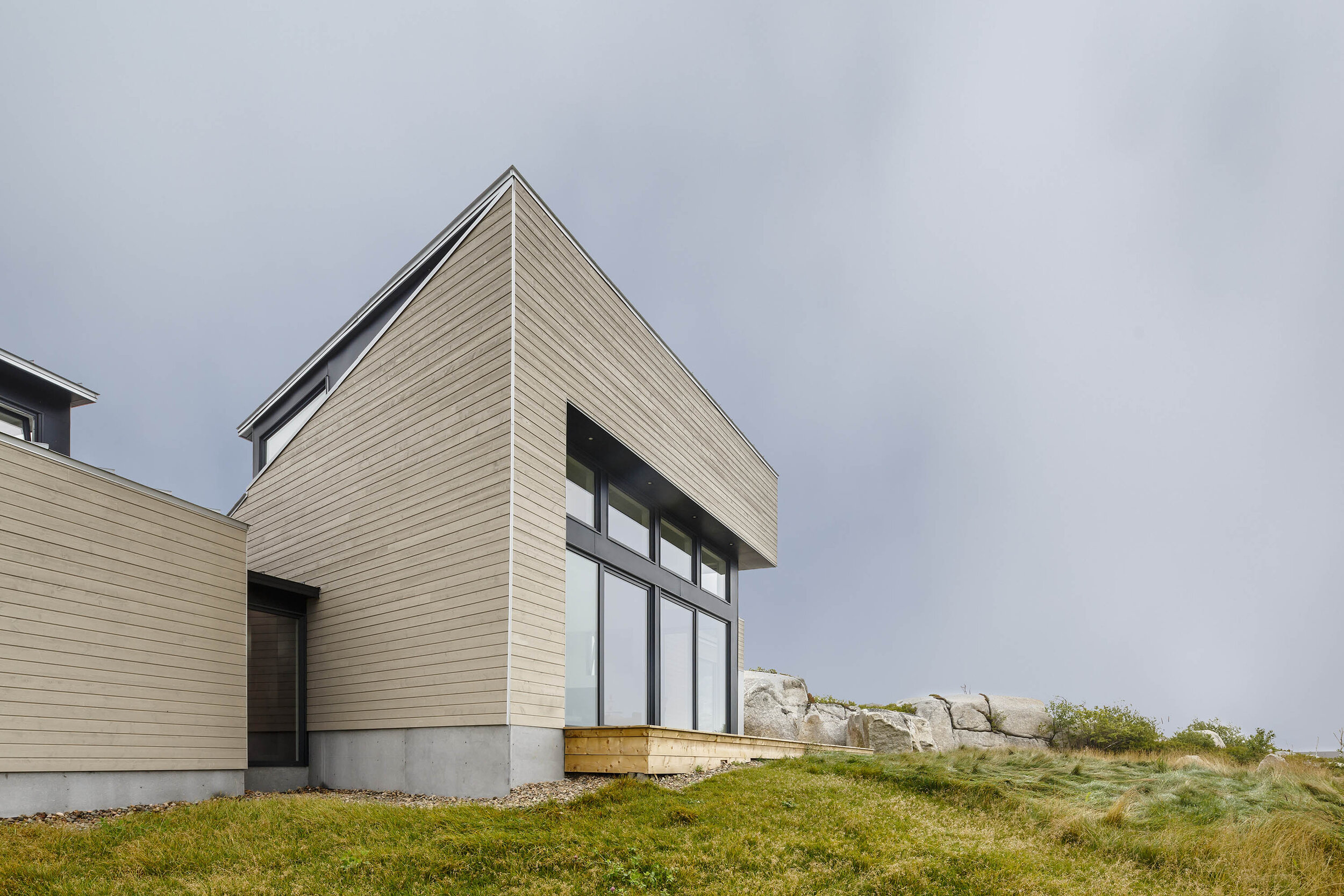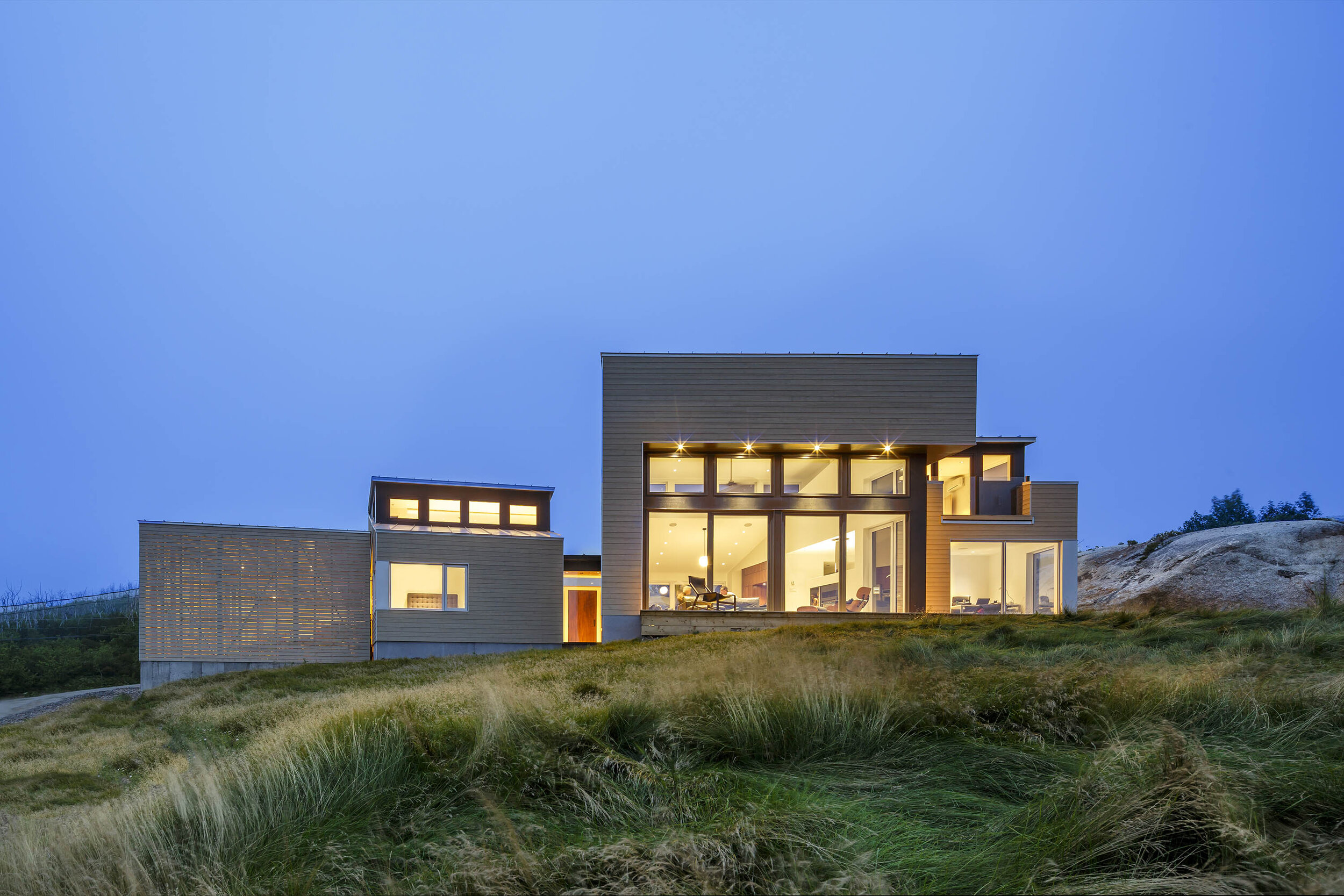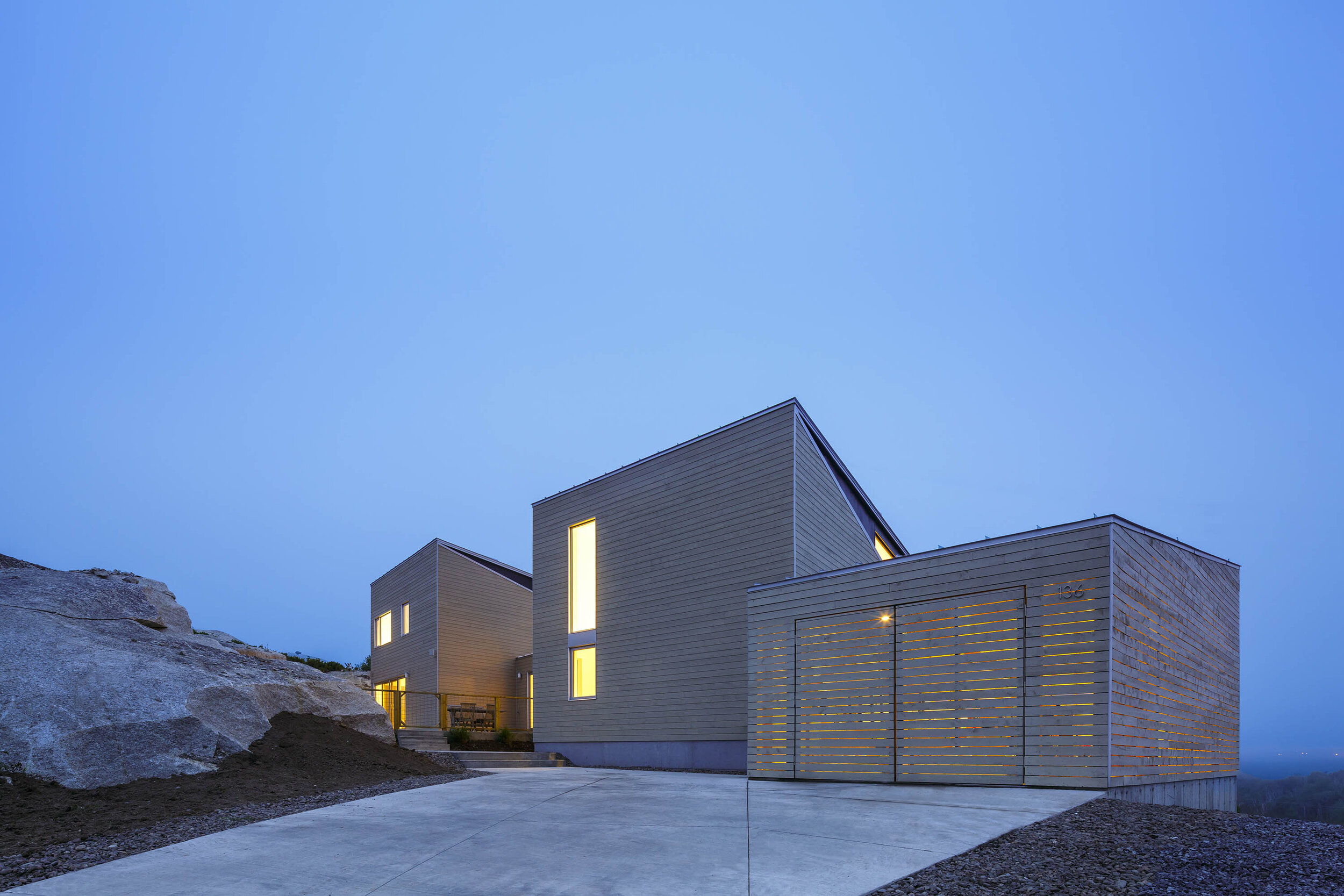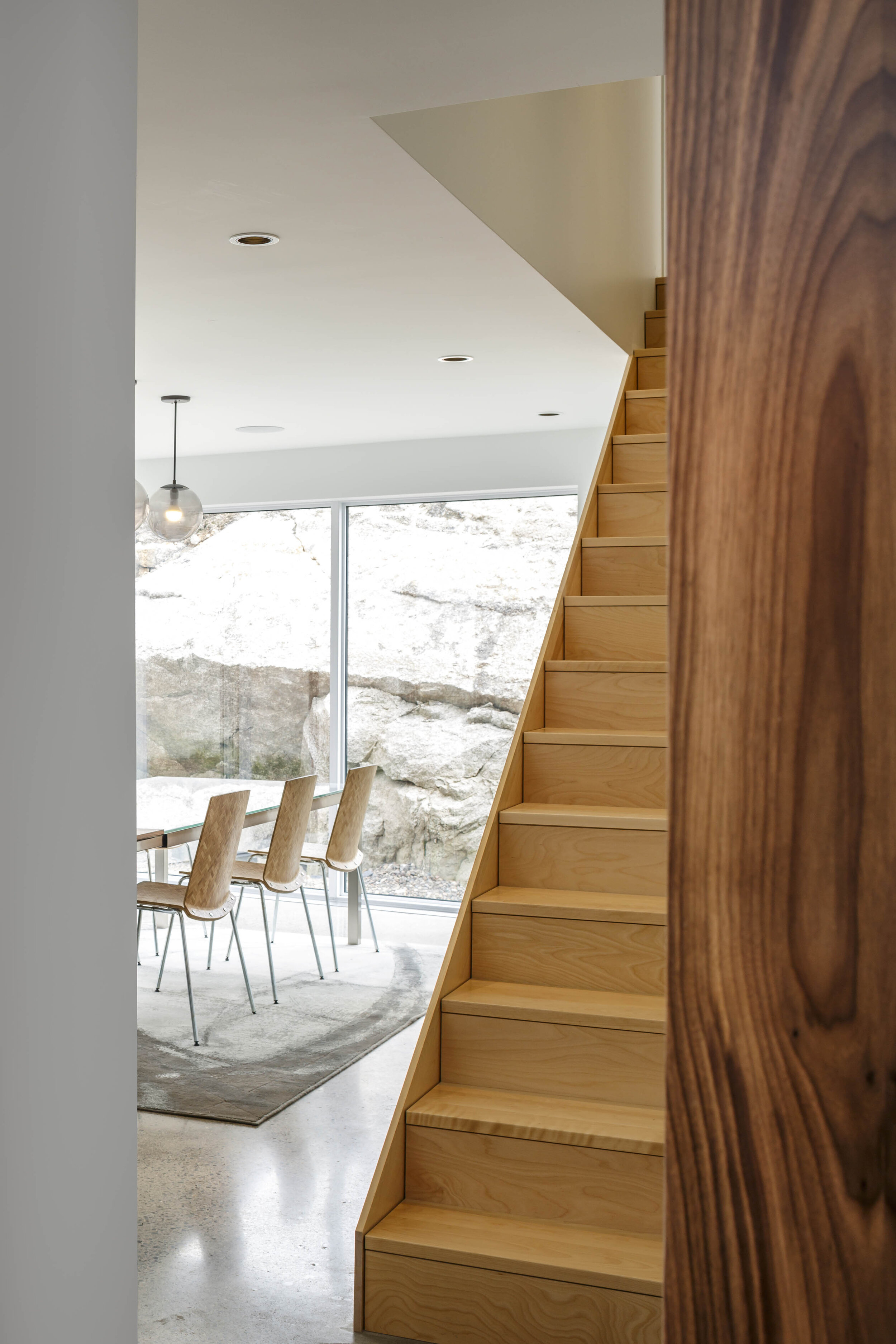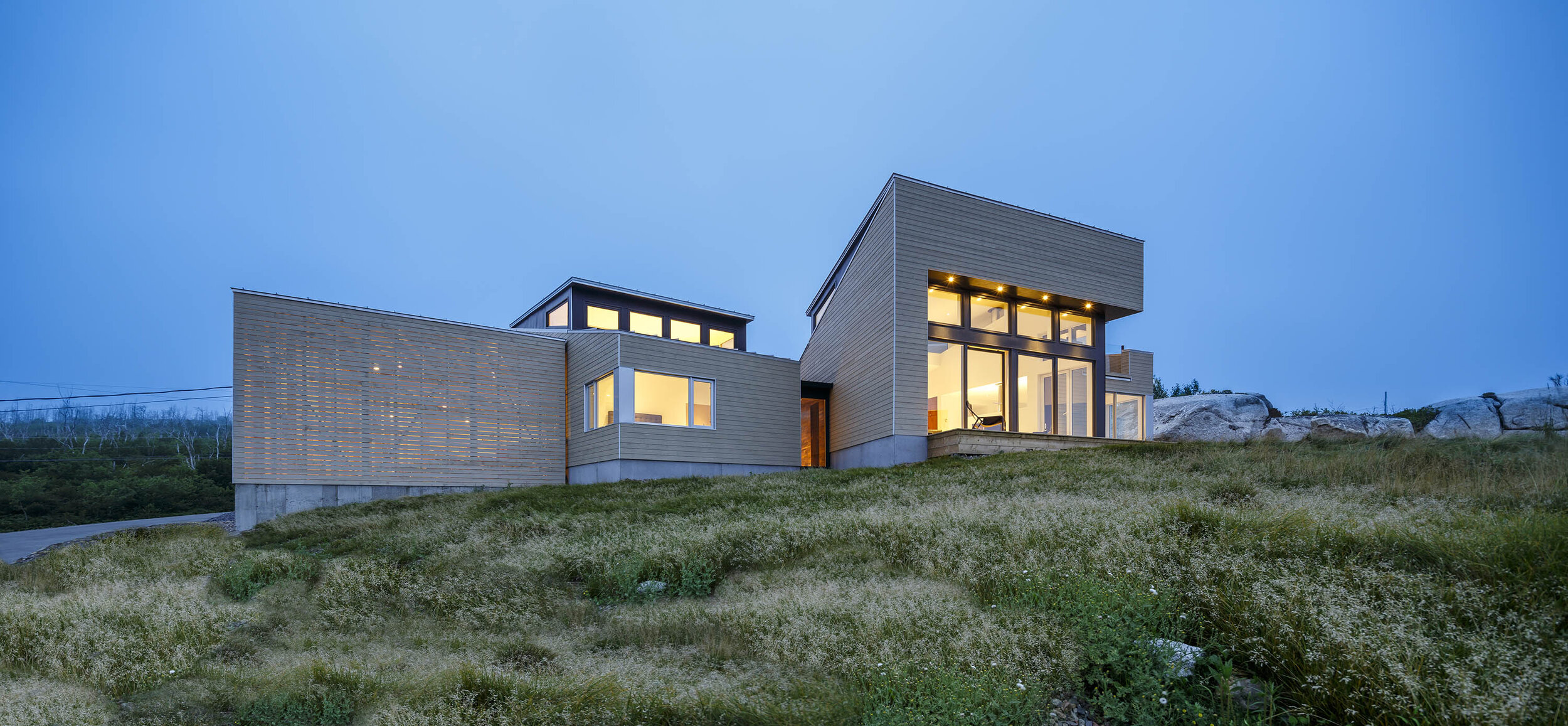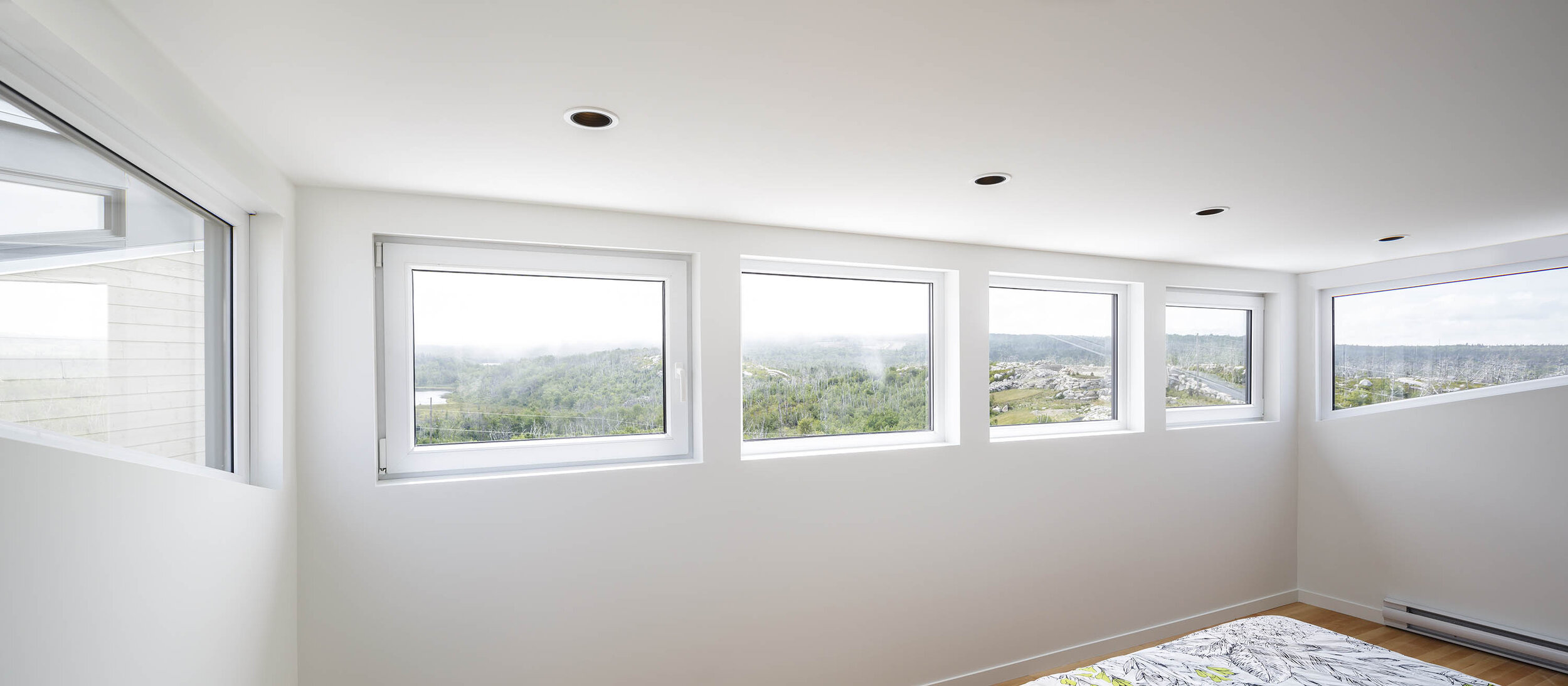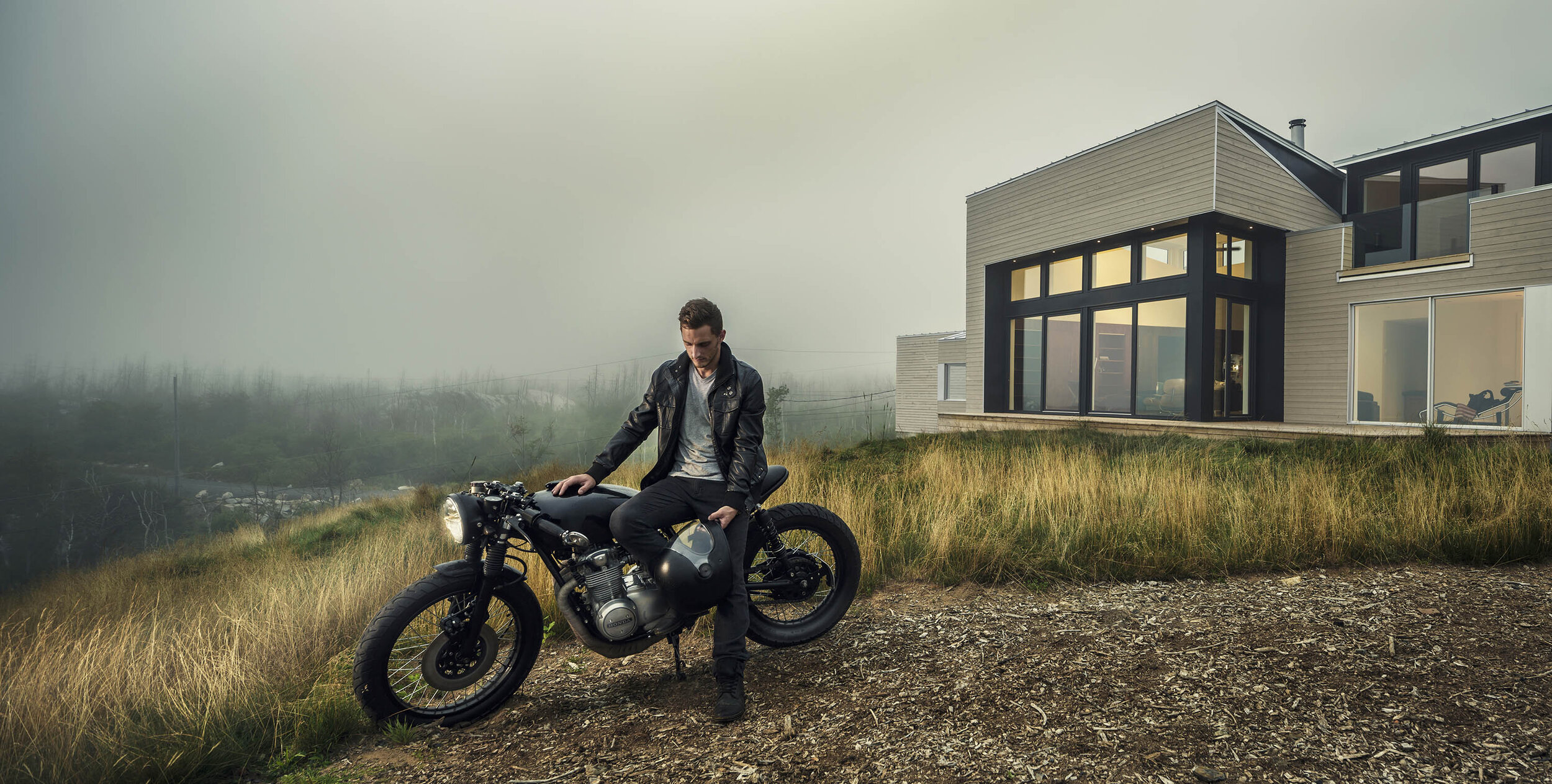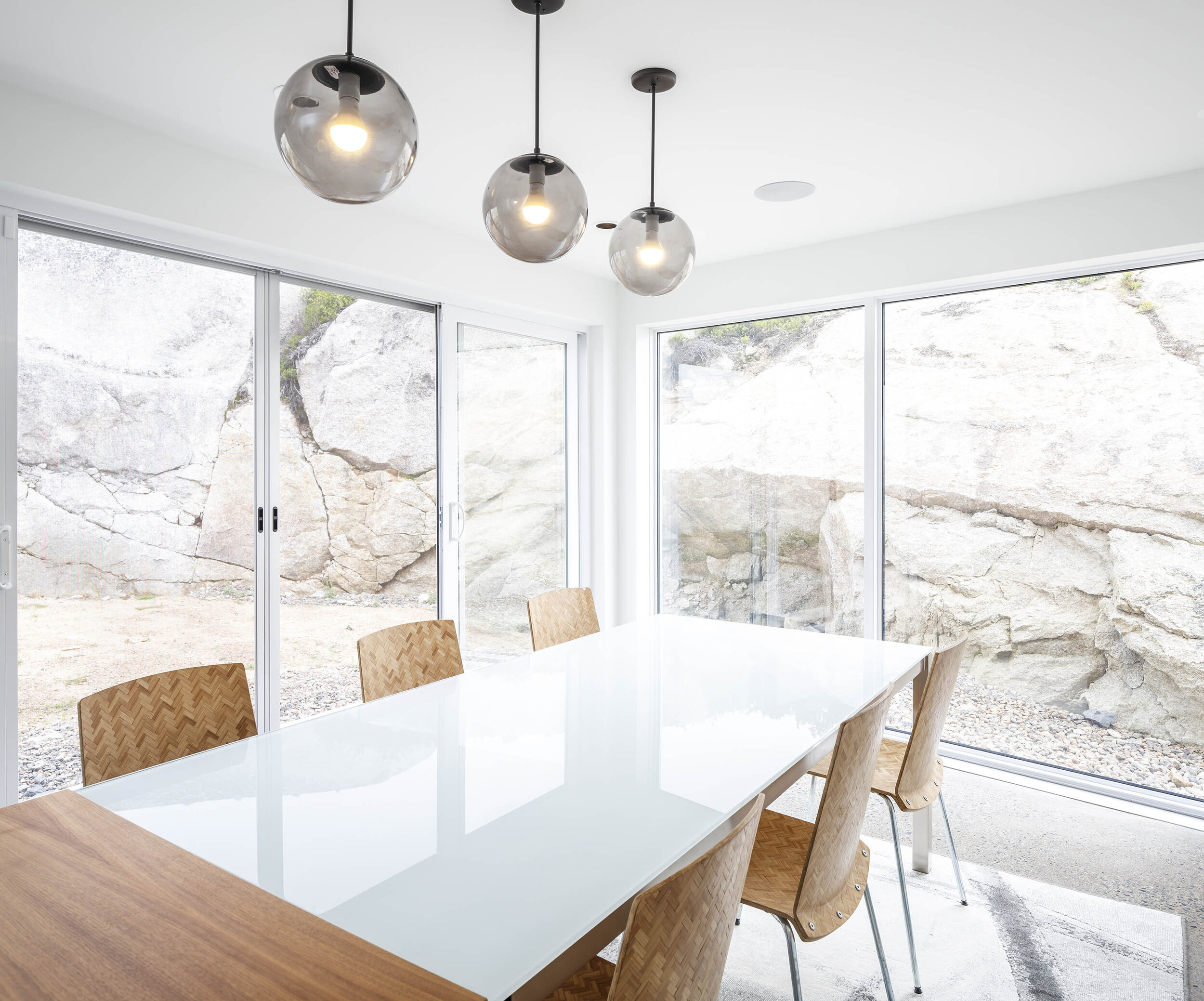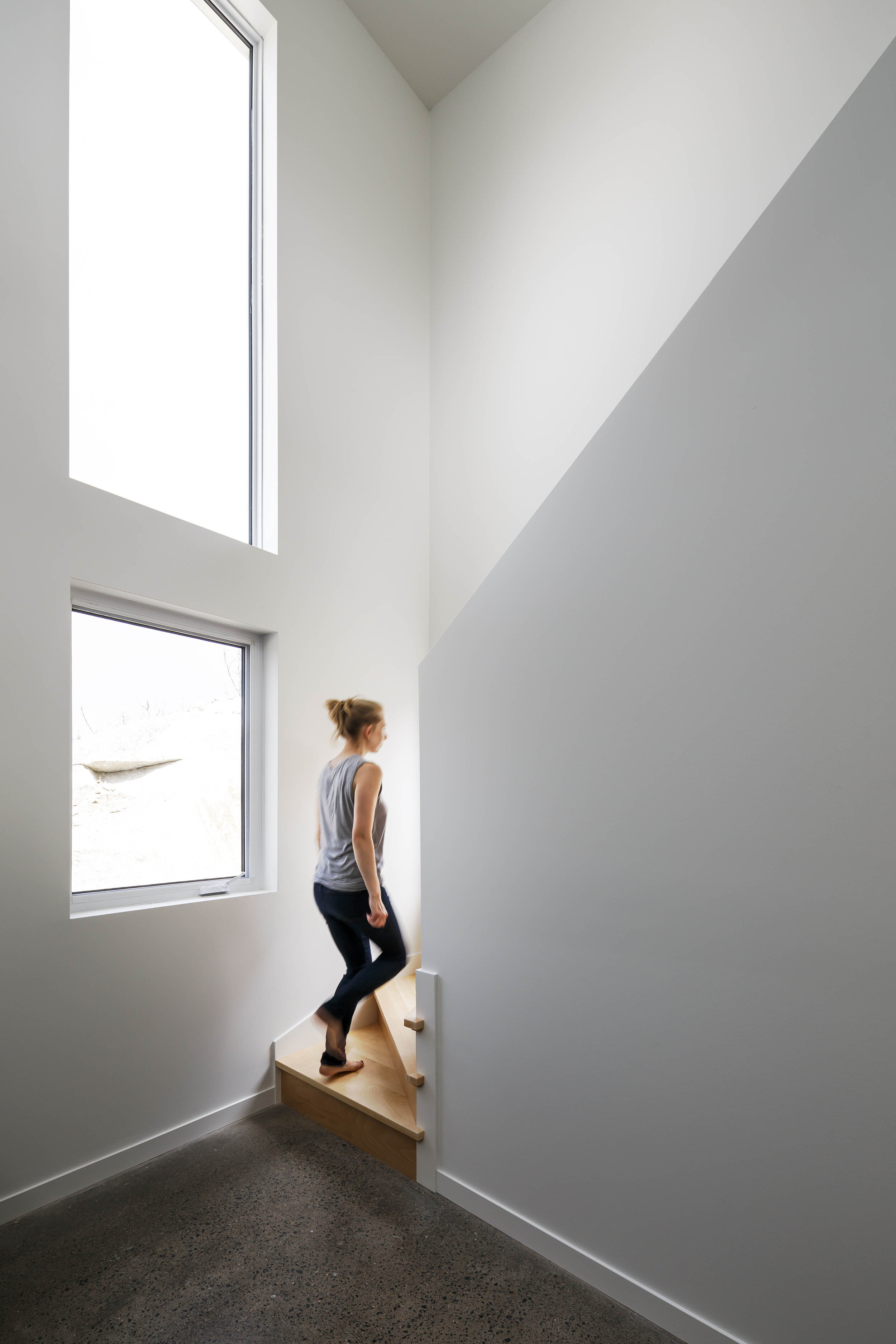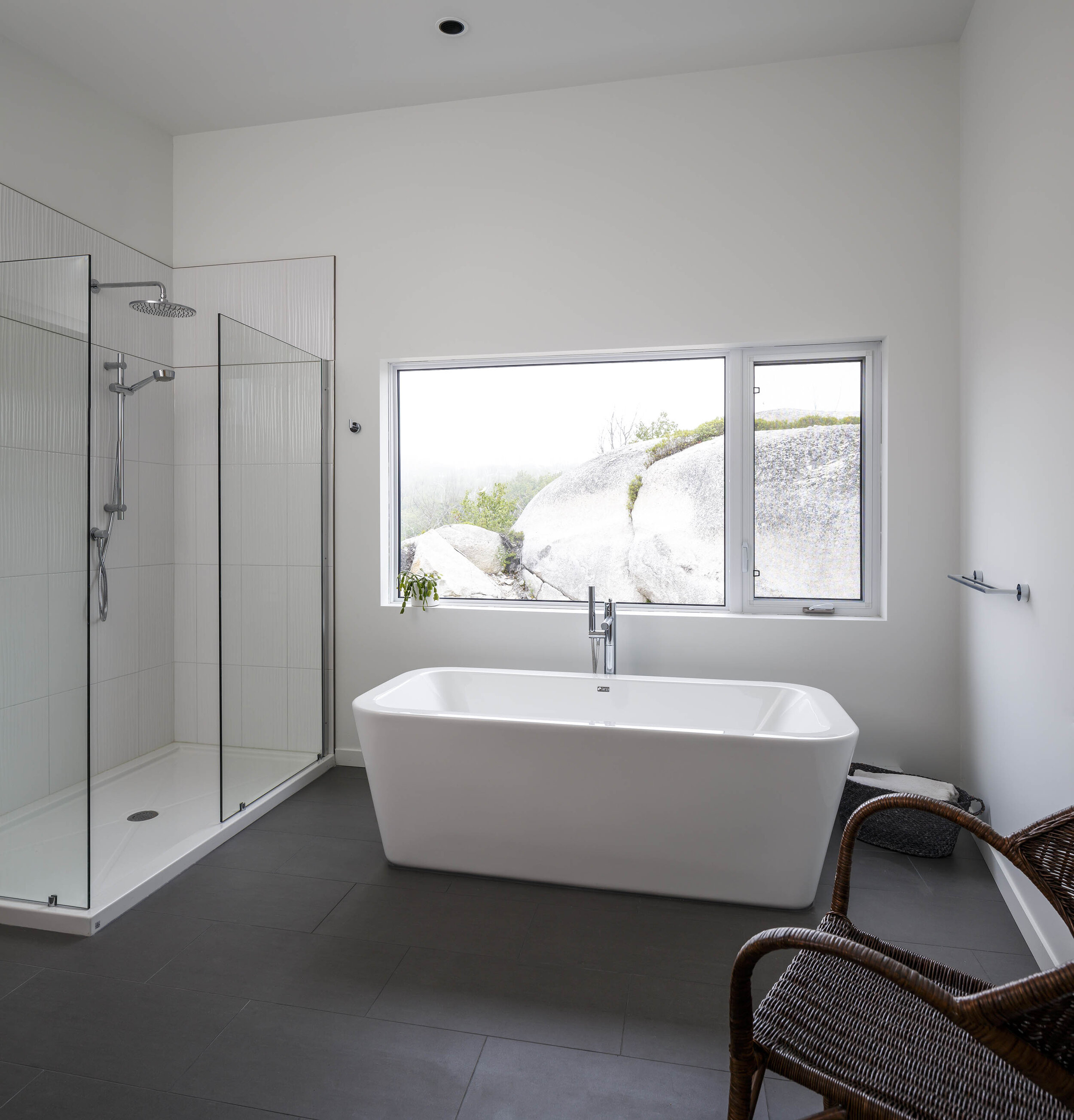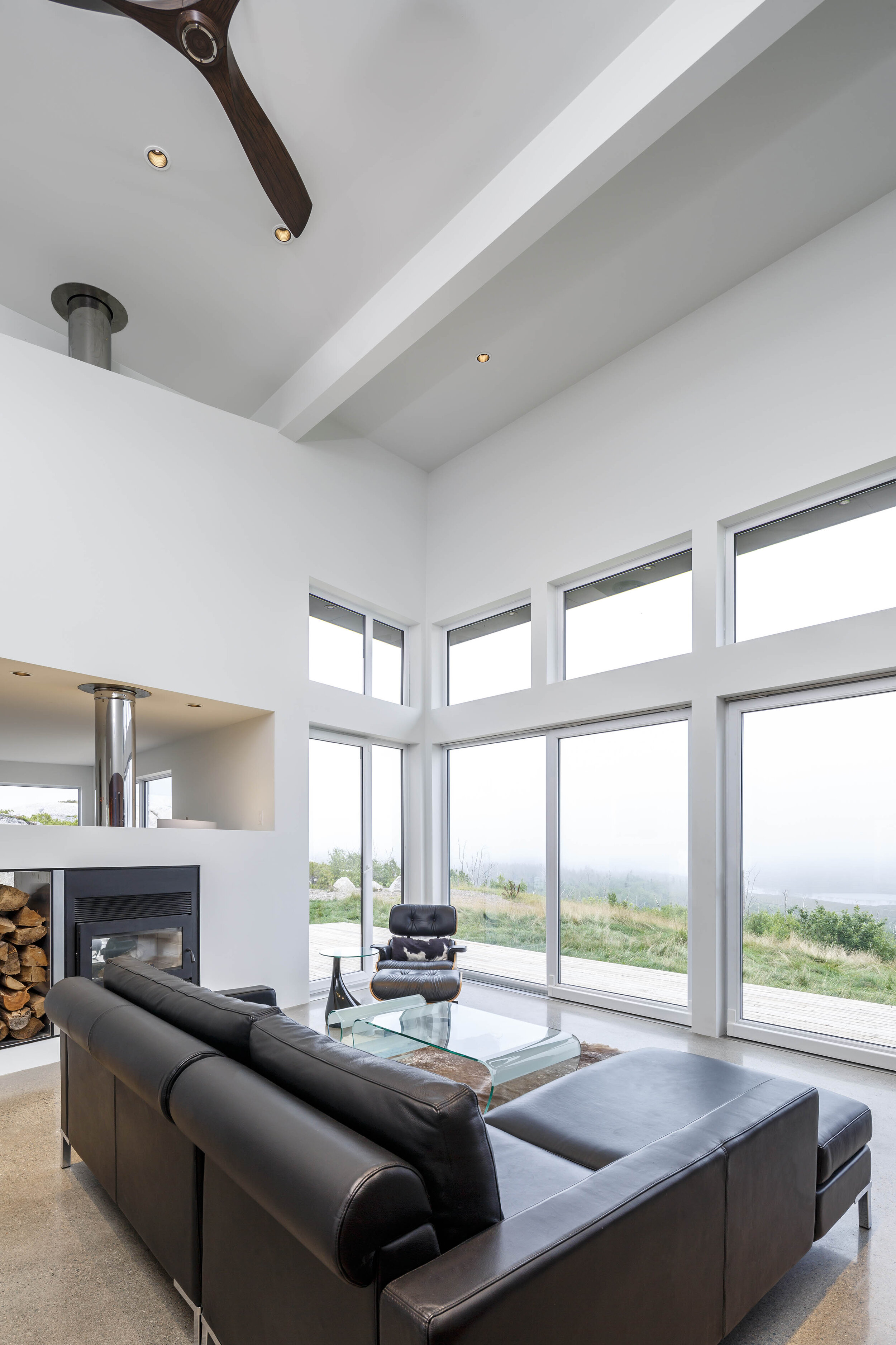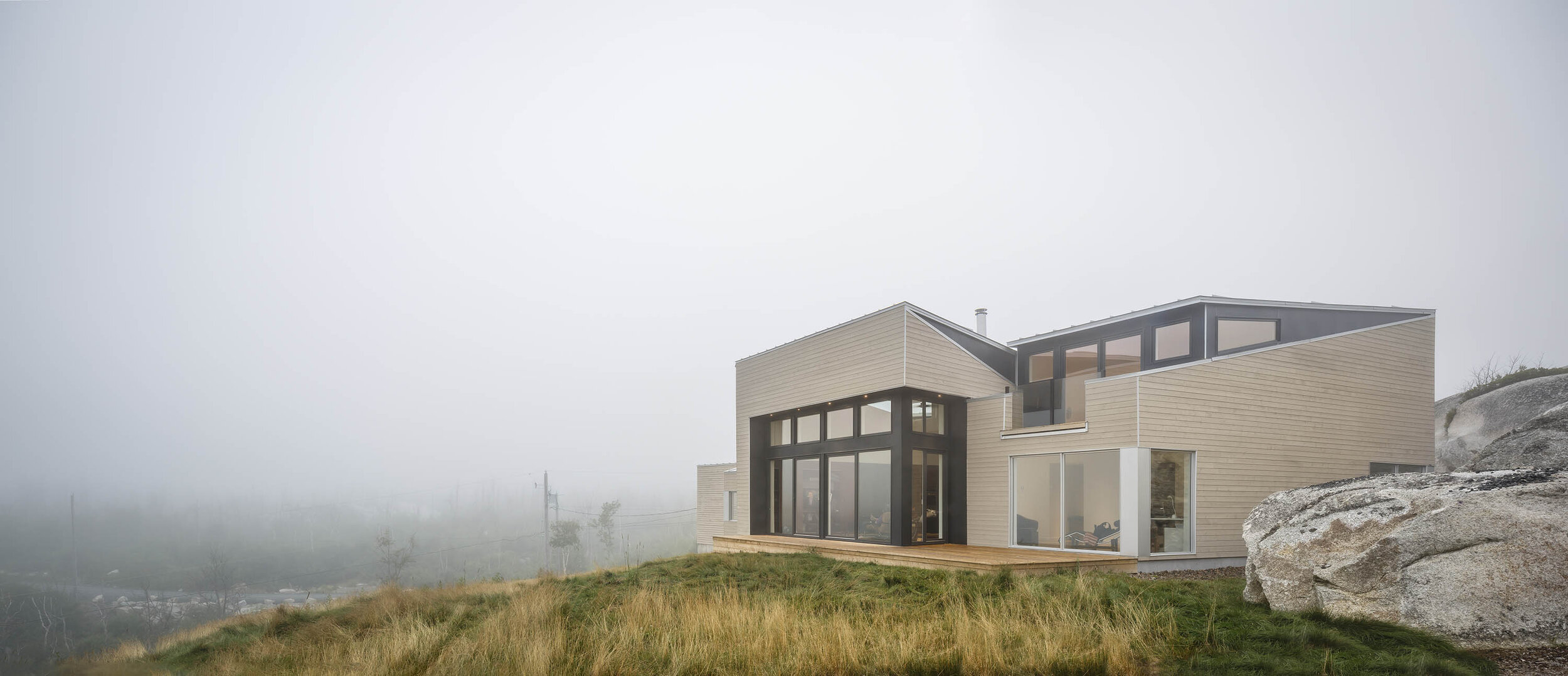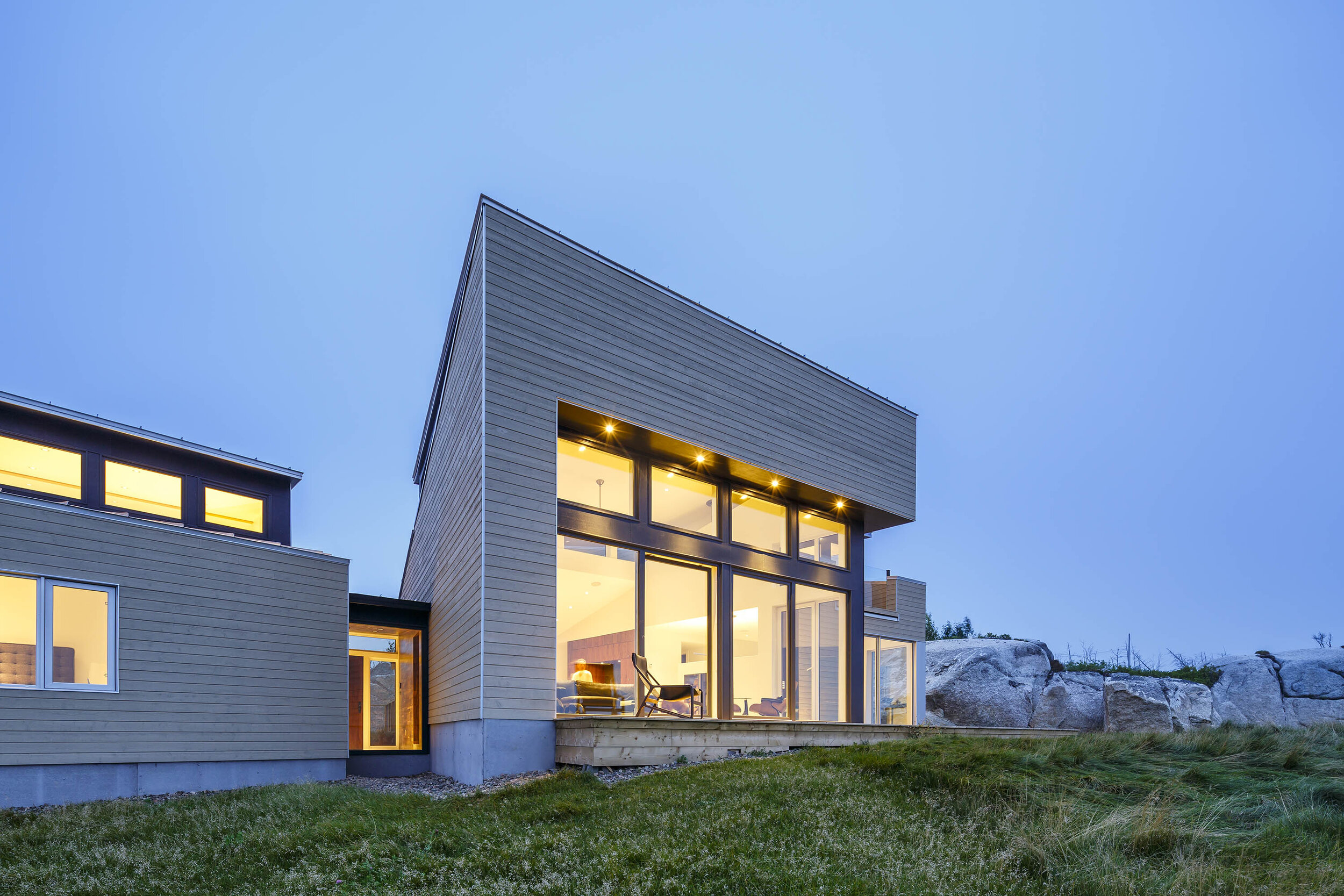Float Halifax, Nova Scotia
Float Halifax, Nova Scotia
Set amidst the unique and dramatic landscape of Halifax’s Purcell’s Cove “backlands”, the residence is inspired by the strewn jagged bedrock field of outcrop, subcrop and bedrock float, the remnants of a glacial valley. ‘Float’ is defined as loose pieces of rock that are not connected to an outcrop. The often foggy property overlooks a series of lakes, mountain bike trails and the ocean beyond. The site also abuts the termination point of a decade old forest fire which left the densely treed landscape looking ghostlike.
The formal massing of the home is one which was derived to evoke a larger bedrock volume (outcrop) but one which has become severed, shifted and has relocated slightly over time. The architectural language is drawn from traditional shed outbuildings, adapted to maximize view, interior natural light and a hierarchy of spaces.
The home is backed up by a several metre high large boulder which creates a private zone between the home and the rock, ideal for a small fire pit and an enclosure for the family dog.
Hiking along the rolling, the walk to Float is an uphill climb. On approach the house shields the grand view. At the top of the concrete driveway, the raw, wild landscaping leads the entrant to a crack between the residence’s volumes. A warm glow of light bleeds from the interior. Inside the entry the visitor is compressed through the use of a lowered ceiling. The end of the entry is fully glazed, giving the guest a narrow lensed view of what lies beyond in the landscape. To the east, three steps above the entry and through a rich wood-lined tunnel leads to the dramatically contrasting great room.
The home, designed for university researcher with two grown children, is composed of a central volume for daily living flanked by two sleeping zones, one of which can be shut off when unoccupied. In one direction the resident is exposed to the enormous view and in the other is reminded of their earthly presence adjacent to the 3 storey high bedrock outcroppings.
Gently adapted, the top of the shed form lifts in appropriate zones, like a popped-up headlight, allowing a seam of light into the top levels and allowing a gentle glow of light to permeate from the house expressing an internal energy.
The exterior façade is clad is a grey washed wood cladding with slight variations in pattern, resembling bedrock strata. Between the grey wood massing are black steel clad panels (shadows) and walls of glazing (voids).
The interior material palette is severe (concrete floor, white walls, dark greys) like the surrounding landscape, with delicate accents of walnut and coloured lacquer panels.
The shed, although a comparable form to the rest of the house’s massing is slightly different in character. At night the open cladding gives off a gentle glow and hints of the traditional wood framed structure from within.
Project Status
Completed Summer 2015
Design
Omar Gandhi, Jeff Shaw, Devin Harper, Ozana Gherman, Hayley Johnson
Contractor
Tamlyn Construction
Structural
Andrea Doncaster Engineering
Physical Model
Devin Harper, Jeff Shaw
Photography
Doublespace Photography, Omar Gandhi, Jeff Shaw


